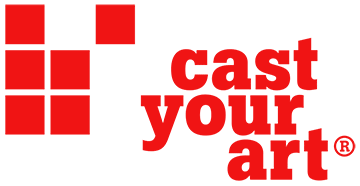Nadine Rennert - Nowhere to Hide
The early work of Nadine Rennert can be considered abstract art. It explores the formal possibilities of its material. It plumbs the depths of its soul, says the artist.
The work of the Berlin-based artist has moved lately more in the direction of figurative art. The use of materials such as fleece, wool, leather, skin or down remains the same, as well as the approach of trying to find what lies within the raw material, within its soul. What has changed is that the material of her work must now be understood in a broader sense. Individual sentences in the form of statements and situations from stories and fairy tales have been added.
These materials originate from the interweaving of individual lives in their social and temporal circumstances. In her sculptural work, Nadine Rennert finds an up-to-date form for these sometime archaic materials through their internal tensions. The used materials sustain these translations into the now. They display the signs of their use, referring to the everyday, to real life. Quietly and unknowingly, they make their way into the lives of their viewers.
What characteristics have we retained through our schooling and the circumstances of our upbringing? What about us has its own history, goes its own way? What do we carry with us? Rennert’s sculptures urge us to question ourselves. They touch upon deeply buried layers: integrity, vulnerability, belonging, being alone or outcast. Her work gets to the nitty-gritty of things.
When the artist investigates the possibilities of her materials, she opens up that which has been well stored away and preserved in the cellar of our existence, exposing it to the world. The ideas for her work develop in this vulnerable interim of awaking, when certain impressions get caught in the light of our half-conscious dream state and then tend to retreat back into the dark depths of the subconscious. These sealed-up goods are uncorked by the work of the artist.
That which is deep-seated is expressed in Rennert’s work with literal openness. On the one hand, it is obvious but on the other hand, not completely articulated, remaining open enough to stir up the viewer’s own history. The artist describes her work as an open-ended invitation that can be met with curiosity. For the sake of argument, through her work, the artist realizes potentials and develops counterpositions against the defenses within ourselves. (wh/jn)
Das könnte Sie auch interessieren

ERWIN WURM. Peace & Plenty
6. December 2018
MANFRED WILLMANN. Die Welt ist schön
25. February 2019
LAWRENCE WEINER. Out Of Sight
22. July 2022
STRABAG Artaward International 2021. Preisverleihung
5. July 2021
Christian Niccoli - Lost in Perception
23. December 0000
Sébastien de Ganay - Transposition and Reproduction (en)
18. July 2017
OTHER WORLDS - Eva Schlegel, Manfred Wakolbinger
11. August 2017
